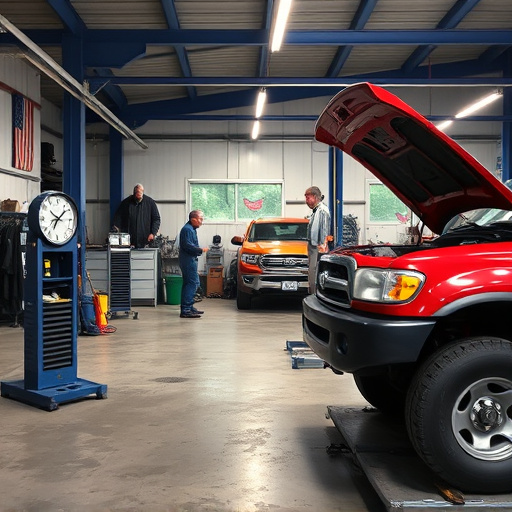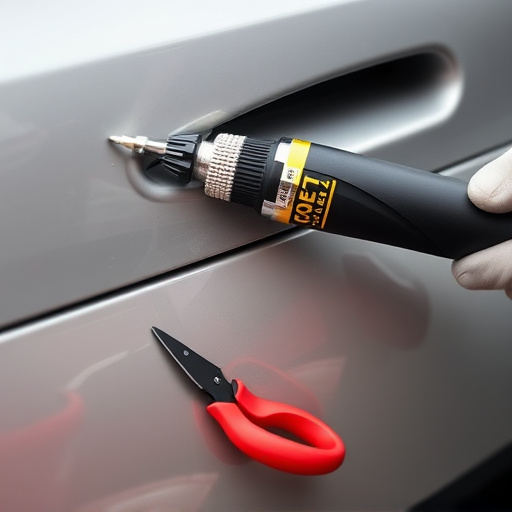A Repair Authorization Service (RAS) streamlines auto repair processes by facilitating communication between customers and collision centers. RAS ensures repairs are authorized before work begins, preventing miscommunications and delays. It allows customers to track requests, while experts assess damage and set expectations for scope of work, timelines, and costs. Transparent communication builds trust, manages customer satisfaction, and enhances the overall repair experience through consistent updates and progress reports.
In today’s competitive market, effectively managing customer expectations is key. One powerful tool that can revolutionize your operations is the Repair Authorization Service (RAS). This article delves into the essentials of RAS, guiding you through its basic understanding, setting realistic customer expectations, and enhancing communication to drive better outcomes. By leveraging RAS, businesses can streamline repairs, boost satisfaction, and foster stronger relationships with clients.
- Understanding Repair Authorization Service Basics
- Setting Realistic Customer Expectations
- Enhancing Communication for Better Outcomes
Understanding Repair Authorization Service Basics

A Repair Authorization Service (RAS) is a critical tool for any car repair shop or collision center looking to streamline their operations and manage customer expectations effectively. At its core, RAS acts as a middleman between customers and service providers, facilitating the approval process for complex repairs. By utilizing this service, collision centers can ensure that all necessary repairs are authorized before starting work, reducing miscommunications and delays.
This system works by providing a secure platform where customers can initiate and track repair requests. Once submitted, these requests are reviewed by qualified individuals—often insurance adjusters or authorized representatives—who assess the damage, consult with experts if needed, and grant or deny authorization. This structured approach enhances transparency, allowing customers to understand the process and receive updates on their vehicle’s status, whether it’s undergoing routine maintenance or a significant collision repair.
Setting Realistic Customer Expectations

Setting realistic customer expectations is a key aspect of managing satisfaction with any service, and this is no different when it comes to auto body repairs. A repair authorization service can play a vital role in ensuring that customers understand the process they are undergoing and what to expect from start to finish. By providing clear communication about the scope of work, estimated timelines, and potential costs involved in vehicle collision repair or car paint services, businesses can set reasonable expectations.
This proactive approach allows customers to make informed decisions and helps avoid misunderstandings later. Realistic expectations also foster trust between the service provider and the customer, as it demonstrates a commitment to transparency. When clients are well-informed about what auto body repairs will entail and how long they might need to wait for their vehicle, they can better plan their schedules and feel more at ease throughout the entire process.
Enhancing Communication for Better Outcomes

Effective communication is a cornerstone when utilizing a repair authorization service to manage customer expectations. By establishing clear and consistent lines of interaction, auto collision centers can ensure clients are well-informed throughout the entire process, from initial assessment to final handover. This includes providing transparent estimates for collision repair services, explaining the scope of work required for autobody repairs, and setting realistic timelines. Such open dialogue fosters trust and satisfaction among customers.
Moreover, regular updates on the repair progress enable clients to stay aligned with expectations, reducing anxiety or uncertainty. Well-communicated details about parts availability, potential delays, and alternative solutions (if needed) demonstrate professionalism and respect for the customer’s time and concerns. Ultimately, enhancing communication within a repair authorization service framework contributes to positive outcomes, ensuring clients feel heard, respected, and appreciated throughout their autobody repairs journey.
The implementation of a robust repair authorization service is key to managing customer expectations effectively. By understanding the basics, setting realistic goals, and enhancing communication channels, businesses can ensure a seamless experience for their clients. This strategy not only improves customer satisfaction but also streamlines operations, making it an invaluable tool in any industry.













